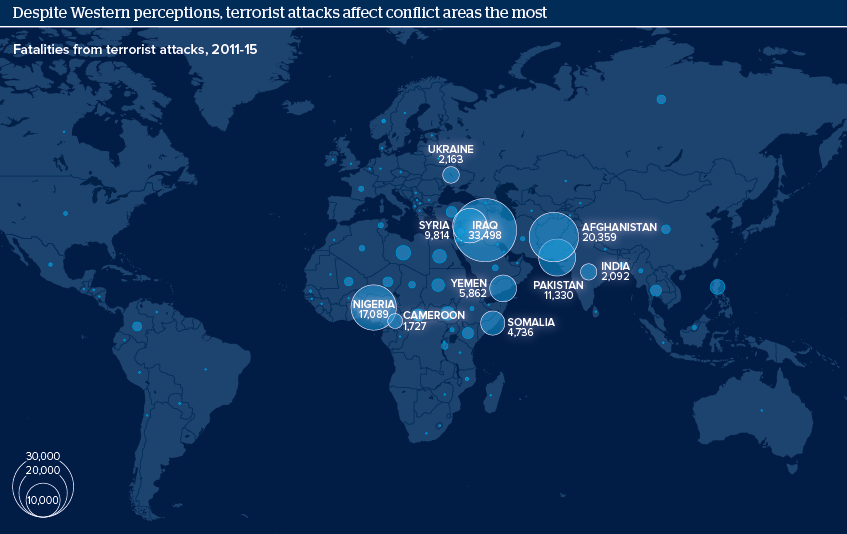Global discourse on terrorism needs revision
Terrorism disproportionately affects Middle Eastern, Asian and African states
Source: Global Terrorism Database
Outlook
The majority of terrorist attacks occur in conflict areas, or countries where state-sponsored political violence is widespread.
The post-Arab-uprisings environment fostered the rise of groups that are motivated by local grievances but affiliate themselves with well-known terrorist networks, such as Islamic State group and al-Qaida, in an effort to attract attention to their cause. This is what Libya's and Egypt's Islamic State branches did, though groups further afield, such as Nigeria's Boko Haram and Somalia's al-Shabaab, have done the same.
Despite media attention, transnational terrorism in the West is a low-frequency event. Excluding 9/11, only 0.5% of all fatalities in the years since 2000 have occurred in the West.
Impacts
- Lone actors, often linked to networks, will remain the main form of attacks in the West in the medium term.
- More than 80% of deaths in the West are attributed to right-wing extremist, supremacist, nationalist and other motivations.
- These types of incident will continue to exceed Islamist-inspired terrorism in the West.
- Beyond using similar tactics, terrorist groups differ vastly and will require diverse solutions.
See also
- Gender inequality is an indicator of conflict risk - Jan 4, 2018
- Right-wing terrorism could rise in the West - Mar 7, 2016
- More graphic analysis
